
Typical Jet Pump Installations
Jet Pumps are mounted above ground and lift the water out of the ground through a suction pipe. Jets are popular in areas with high water tables and warmer climates.
There are two categories of jet pumps and pump selection varies depending on water level.
- Shallow well installations go down to a water depth of about 25 feet (7.62 m).
- Deep wells are down 150 feet (45.72 m) to water, where surface pumps are involved.

The jet pump is a centrifugal pump with one or more impeller and diffuser with the addition of a jet ejector.
The nozzle receives water at high pressure. As the water passes through the jet, water speed (velocity) is greatly increased, but the pressure drops. This action is the same as the squirting action you get with a garden hose as when you start to close the nozzle.
The greatly increased water speed plus the low pressure around the nozzle tip, is what causes suction to develop around the jet nozzle. Water around a jet nozzle is drawn into the water stream and carried along with it.
For a jet nozzle to be effective it must be combined with a venturi. The venturi changes the high-speed jet stream back to a high-pressure for delivery to the centrifugal pump. The jet and venturi are simple in appearance but they have to be well engineered and carefully matched to be efficient for various pumping conditions. The jet nozzle and venturi are also known as ejectors/ejector kits.
On a shallow-well jet pump the ejector kit (jet nozzle and venturi) is located in the pump housing in front of the impeller. A portion of the suction water is recirculated through the ejector with the rest going to the pressure tank. With the ejector located on the suction side of the pump, the suction is increased considerably.
This enables a centrifugal pump to increase its effective suction lift from about 20 feet to as much as 28 feet.
But, the amount of water delivered to the storage tank becomes less as the distance from the pump to the water increases… more water has to be recirculated to operate the ejector.

The difference between a deep-well jet pump and a shallow-well jet pump is the location of the ejector.
The deep-well ejector is located in the well below the water level. The deep-well ejector works in the same way as the shallow-well ejector. Water is supplied to it under pressure from the pump. The ejector then returns the water plus an additional supply from the well, to a level where the centrifugal pump can lift it the rest of the way by suction.
This is of particular value when you have a water level that is gradually lowering. This will probably require a change of venturi to work efficiently. Because jet pumps are centrifugal pumps, the air handling characteristics are such that the pump should be started with the pump and piping connections to the water supply completely filled with water.
With a shallow-well jet pump, the ejector is mounted close to the pump impeller. With a deep well jet pump, the ejector is usually mounted just above the water level in the well, or else submerged below water level.
Centrifugal pumps, both the shallow-well and deep well types have little or no ability to pump air. When starting, the pump and suction line needs to have all of the air removed. An air leak in the suction line will cause the pump to quit pumping … or sometimes referred to as “losing its prime”.
How a jet provides pumping action?

Water is supplied to the Jet ejector under pressure. Water surrounding the jet stream is lifted and carried up the pipe as a result of the jet action.
When a jet is used with a centrifugal pump a portion of the water delivered by the pump is returned to the jet ejector to operate it. The jet lifts water from the well to a level where the centrifugal pump can finish lifting It by suction.
Jet Pump – Principles Of Operation (VIDEO)
Cant see this video? Click here to watch it on Youtube.
Reference: Pump Basics: How Centrifugal Pump Works – A.Y. McDONALD MFG. CO.

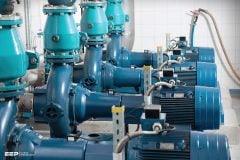
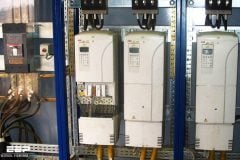
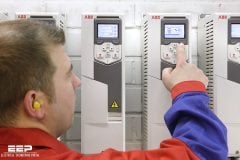
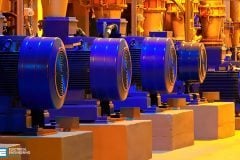
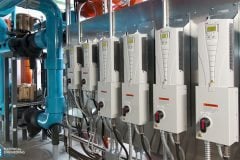



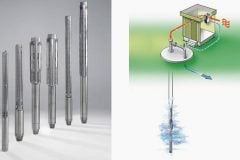

Profound well fly siphons utilize two lines, one for pulling the water, and one for driving the water into the conveyance framework. Profound well fly siphons can siphon water from wells that range from 25 to 110 feet down. A submarine siphon can likewise be utilized in shallow wells. 2. We suggest a hostage vacuum apparatus tank. Shallow Well Jet Pumps can siphon water from 0′ to 25′ profound. Convertible Well Jet Pumps siphon water from 0′ to 90′ profound. A Convertible Well Jet Pump can work between 0′ to 25′ with a shallow fly well spout or between 25′ to 90′ profound with an ejector gathering.
Thanks a lot for sharing the unique idea.
Hello, I have a shallow well pump 1D874 Dayton pump. I’m wondering can I use this pump as a booster pump and If so would u needy to purchase an ejector for pump or can I use it without ejector.
If my 90+ ft. well has a water level of 15′ to surface and an ejector is installed at 25′ depth, what would be the result if I also used the in pump injector kit that normally ships with a pump? I have no idea what the result would be or even if that is a compatible combo.Just wondering before I attempt installation of a new pump and perhaps a new well ejector.
This is a 2″ well casing of PVC.. The ejector in the well has been there for many years and I just wonder what kind of problems I can look for in pulling the pipe and ejector. Have read a lot about the process and believe it could take some doing. I believe there are perhaps leather seals that are possibly hardened or deteriorated which can be a BIG problem. Any known solution to get around that problem? You may not be the person that can answer any of these questions, but since this comment section was in a pump and well design section, I thought I would give it a shot.
Thanks
I REALLY WANT TO HUG YOU. SEARCHING FOR A LONG TIME FOR THE WORKING PRINCIPLE OF THE JET PUMP WHICH I SEE EVERY WHERE IN MY VILLAGE.
THANKS A LOT